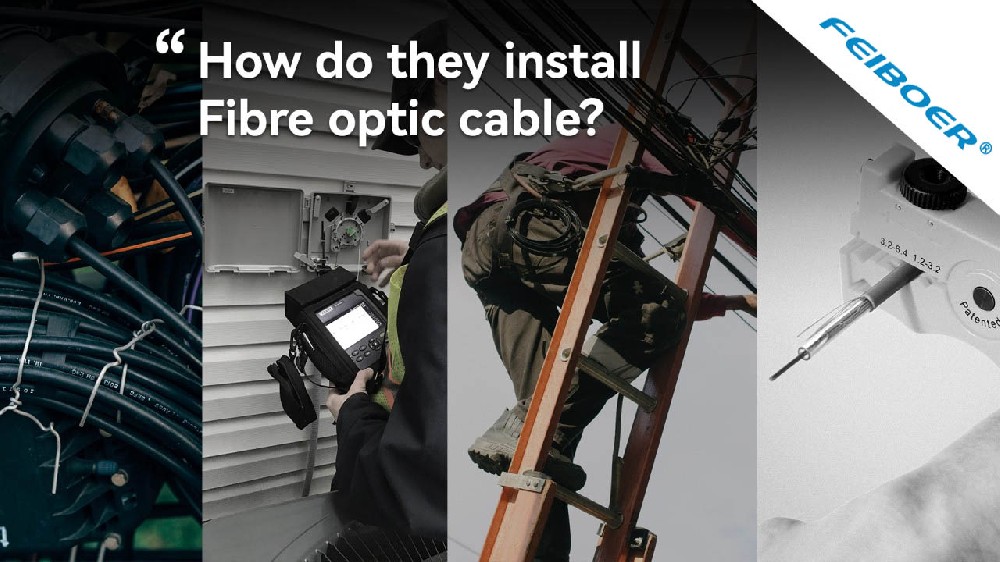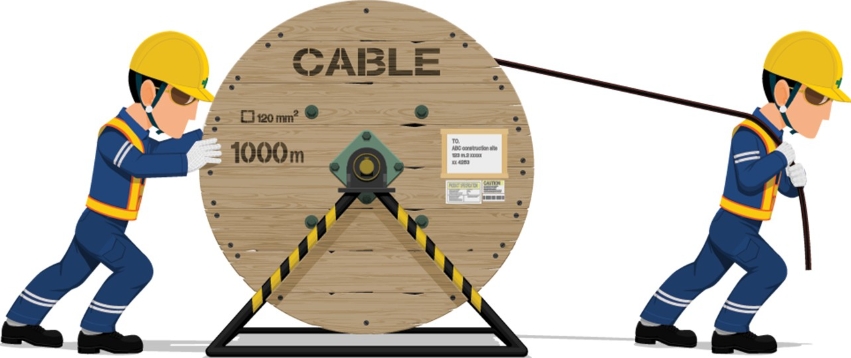Installing fiber optic cable involves several steps, typically including planning, preparation, and execution. Here's a general overview of the process:
Planning:
Determine the route: Identify the path where the fiber optic cable will be installed, considering factors such as distance, terrain, existing infrastructure, and potential obstacles.
Obtain necessary permits: Depending on the location and regulations, you may need to obtain permits before beginning the installation process.
Assess requirements: Determine the type and quantity of fiber optic cable needed, as well as any additional equipment required for installation.
Preparation:
Gather equipment: Acquire all the necessary tools and equipment for installation, including fiber optic cables, connectors, splicers, fusion splicing machines, optical time-domain reflectometers (OTDRs), and cable pulling equipment.
Survey the route: Conduct a thorough survey of the installation route to identify any potential hazards or obstacles that may need to be addressed before installation begins.
Prepare the cable: If necessary, prepare the fiber optic cable by cutting it to the appropriate length and attaching connectors.
Installation:
Excavation or trenching: In some cases, you may need to dig trenches to bury the fiber optic cable underground. Alternatively, the cable may be installed aerially or through existing conduits.
Cable pulling: Use cable pulling equipment to carefully install the fiber optic cable along the predetermined route. Special care should be taken to avoid sharp bends or kinks that could damage the cable.
Splicing: If the installation route requires multiple segments of fiber optic cable to be connected, use fusion splicing machines to splice the cables together. This process involves carefully aligning the fiber cores and fusing them together using heat.
Termination: Attach connectors to the ends of the fiber optic cable to facilitate connection to network equipment. This may involve epoxy-based connectors or mechanical connectors, depending on the specific requirements of the installation.
Testing and Verification:
Once the installation is complete, thoroughly test the fiber optic cable to ensure proper installation and functionality. This may involve using OTDRs and other testing equipment to measure signal loss, detect any faults or breaks in the cable, and verify the quality of the connection.

Documentation and Cleanup:
Document the installation process, including the location of the fiber optic cable, splice points, and any other relevant information.
Clean up the installation site, removing any debris or equipment used during the installation process.
Throughout the installation process, it's essential to follow industry best practices and safety guidelines to ensure the successful deployment of the fiber optic cable. Additionally, proper training and certification may be required for individuals performing installation work.
Why is fiber optic cable very popular?
Fiber optic cable is very popular for several reasons:
High Bandwidth: Fiber optic cables can carry a massive amount of data compared to traditional copper cables. This high bandwidth allows for faster internet speeds, better quality video streaming, and more efficient data transmission.
Low Attenuation: Fiber optic cables have much lower signal loss over long distances compared to copper cables. This means that data can be transmitted over longer distances without the need for signal boosters or repeaters.
Immunity to Electromagnetic Interference (EMI): Unlike copper cables, fiber optic cables are not affected by electromagnetic interference. This makes them ideal for use in areas with high electromagnetic interference, such as near power lines or in industrial environments.
Security: Fiber optic cables are difficult to tap into without detection. Since they transmit data using light rather than electricity, there is no electromagnetic signal emitted that can be intercepted. This makes fiber optic cables more secure for transmitting sensitive information.
Lightweight and Flexible: Fiber optic cables are much lighter and more flexible than copper cables, making them easier to install and maintain. They can be installed in tight spaces and around corners without sacrificing performance.
Durability: Fiber optic cables are more durable than copper cables and can withstand harsh environmental conditions such as extreme temperatures, moisture, and even exposure to chemicals.
Future-Proofing: Fiber optic technology has a long lifespan and is continually being improved upon. Investing in fiber optic infrastructure now ensures that networks will be able to handle increasing data demands well into the future.
Overall, the combination of high bandwidth, low signal loss, immunity to interference, security, flexibility, durability, and future-proofing makes fiber optic cable a very popular choice for telecommunications and data transmission.

Does cold weather affect fiber optic cable?
Cold weather typically doesn't directly affect the performance of fiber optic cables themselves. Fiber optic cables are made of glass fibers and are designed to operate in a wide range of temperatures, including cold weather conditions.
However, extreme cold temperatures can affect the surrounding infrastructure or components of the fiber optic network, which could indirectly impact performance. For example:
Moisture Ingress: In cold weather, condensation can occur, leading to moisture ingress into equipment enclosures or splice closures. This moisture can degrade the performance of the fiber optic network over time.
Thermal Contraction: Extreme cold can cause materials like metal or plastic to contract. This contraction could potentially lead to physical stress on the fiber optic cables or connectors if they are not properly installed or if there are sudden temperature changes.
Snow and Ice Build-Up: Snow and ice accumulation on overhead fiber optic cables or on equipment enclosures can potentially cause physical damage or add weight, leading to sagging or breakage.
Power Outages: In some cases, extreme cold weather can cause power outages, which could impact the availability of the fiber optic network if backup power systems are not in place.
Overall, while cold weather itself may not directly affect the fiber optic cables, it's essential for network operators to consider and mitigate potential indirect effects on the surrounding infrastructure to ensure the reliability and performance of the network during cold weather conditions.
03-21
202502-12
202509-12
202409-05
202408-16
202408-07
202408-06
202408-02
202407-30
202407-29
2024
